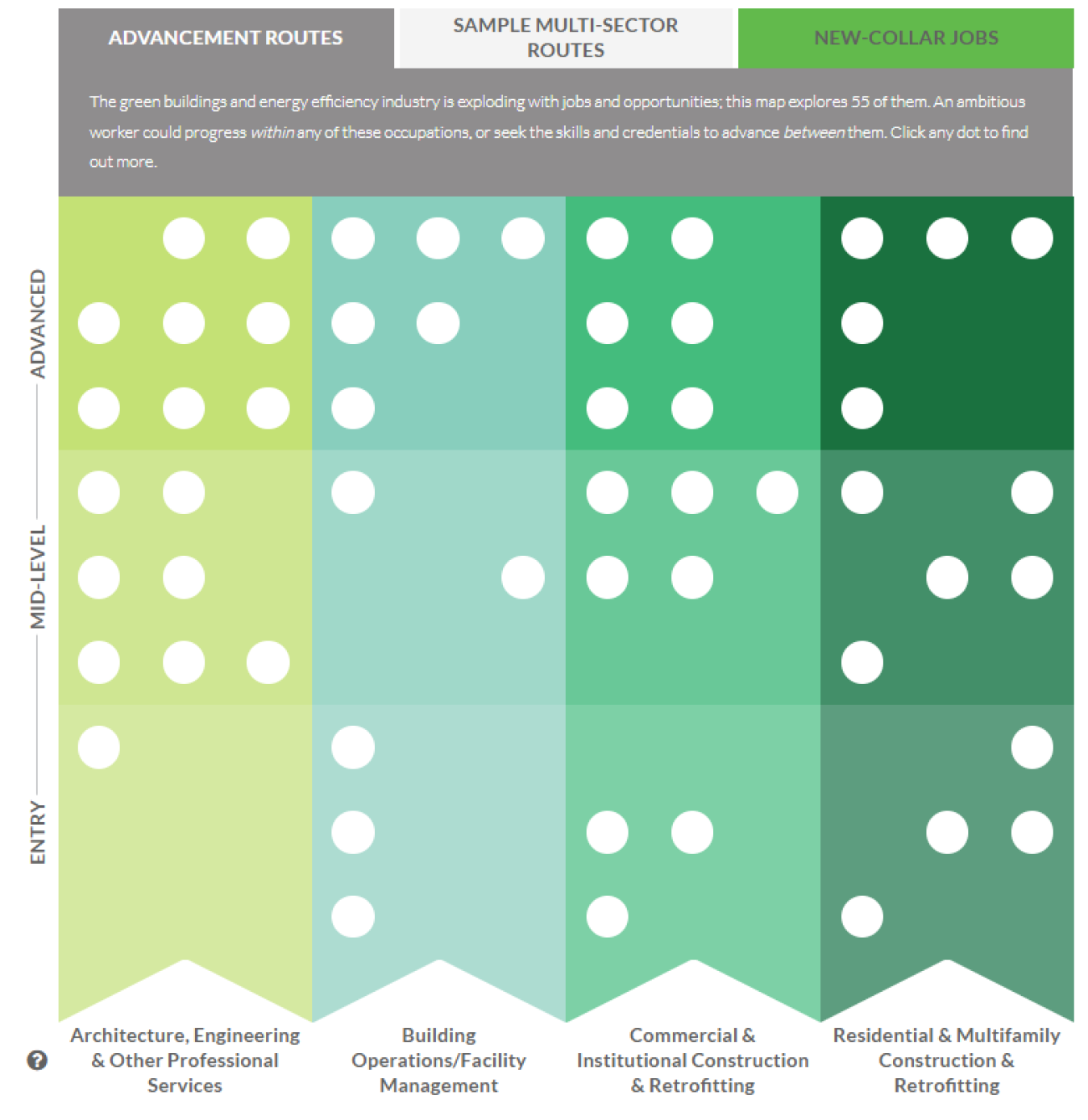
Demand for energy-efficient buildings continues to grow as consumers realize the benefits of more affordable, efficient, resilient, and healthy buildings. Capitalizing on this demand will be key to the United States’ goal of achieving net-zero greenhouse gas emissions no later than 2050. To carry out a transition of the nation’s energy infrastructure, the U.S. will require a robust workforce that integrates building science and energy-efficiency knowledge into their standard practice.
The Building Technologies Office (BTO) is dedicated to growing the American workforce deploying energy-efficient infrastructure. The building efficiency workforce consists of a wide array of professionals involved in efficient building manufacturing, construction, architecture, engineering, real estate, and professional services. BTO, through the Workforce Development strategy, aims to increase the quantity, quality, diversity, and productivity of today’s building efficiency workforce, to increase the adoption of high-performance buildings nationwide.

The Green Buildings Career Map explores jobs and opportunities in the green buildings and energy-efficiency industry.
Building Interest and Awareness
BTO’s Workforce Development strategy will increase public awareness of energy-efficient buildings and increase interest in careers in the building efficiency workforce. BTO will showcase these careers as welcoming, impactful, and rewarding, with a particular focus on reaching communities that have historically been left out. As part of DOE’s promotion of energy justice, supporting the building efficiency workforce will help ensure that the disenfranchised will equally benefit from the energy innovation revolution. One useful resource BTO developed is the Green Buildings Career Map, which contains information on over 50 careers across various sectors supporting green buildings. This interactive webpage provides career pathways, salary information, and educational requirements for those seeking guidance to a green building career.
Streamlining Paths to Good Careers
BTO will work with the buildings industry to develop career pathways from education and training to entry-level and long-term careers in the building efficiency workforce. BTO will also standardize job codes for positions requiring energy skills. Securing a robust building efficiency workforce will help revitalize the U.S. energy and manufacturing sectors, while at the same time creating millions of good-paying union jobs.
Improving Skills and Training
The building efficiency workforce is an essential part of the workforce of the future. BTO understands that maintaining a building efficiency workforce requires updating and standardizing the building industry’s education and training to include the latest technologies, energy research findings, and relevant best practices. BTO will support those efforts, as well as enhancing continuing education and building science competencies in existing training pathways for those in building sector careers.
Increasing Market Growth and Stability
Training people for careers is not enough to drive job growth; there must be demand for efficient products and services to drive the pipeline of building efficiency workers. Therefore, BTO will work across federal agencies and with industry leaders to identify methods for enabling stable market growth, with the goal of supporting year-round, full-time employment opportunities in energy innovation. BTO is also committed to fostering American innovation on efficient building technology development, including by supporting technology commercialization and entrepreneurship.

